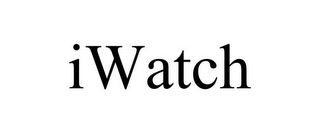 The iPhone was released on June 29, 2007. Six days later on July 5, 2007, watch maker M.Z. Berger & Co. filed a trademark application on iWatch for watches, clocks, and related accessories. Coincidence?
The iPhone was released on June 29, 2007. Six days later on July 5, 2007, watch maker M.Z. Berger & Co. filed a trademark application on iWatch for watches, clocks, and related accessories. Coincidence?
Was the plan to grab up the iWatch trademark and sell it to Apple later? Too bad Apple went with “Apple Watch” instead.
Its a common misconception that filing a trademark application grants rights in a trademark without actually using the trademark. Just file a trademark application and the trademark is yours! No.
Speculating in trademarks without actual use of the trademark is a fruitless endeavor.
Watch maker Swatch AG filed an opposition against the iWatch trademark application. The TTAB, and later the appeals court, sustained the opposition and prevented the registration of iWatch because the evidence showed that Berger did not have a bona fide intent to use the iWatch mark with watches, clocks, and related accessories at the time the application was filed. M.Z. Berger & Co., Inc. v. Swatch AG, No. 2014-1219 (Fed. Cir. June 4, 2015). Instead, Berger merely intended to reserve the trademark.
Trademark rights are only acquired by using the trademark in conjunction with the sale/providing of goods or services. An intent-to-use trademark application can be filed before a trademark is used with products or services, but only if there is a bona fide intent–at the time the application is filed–to use the trademark with the goods/services described in the application. This is where Berger failed with iWatch.
You Can’t File an Application to “Leave All Doors Open”Â
Berger ‘s CEO admitted that Berger never intended to use the iWatch mark for anything other than watches, but the application included clocks and related accessories. The paralegal who filed the application for Berger said the the CEO instructed her to register the mark for only watches and clocks, but she included other related accessories to “leave all doors open.”
An application can’t be filed to leave all doors open, you need to have a present bona fide intent to use the mark on all of the goods listed in the trademark application.
So, Berger admitted it did not intend to use the mark on clocks and accessories at the time the application was filed.
Conflicting Stories Don’t Engender Belief
Berger witnesses had conflicting stories about the evidence. For example, Berger presented images depicting mockups of an iWatch. Some employees testified that the images were pictures of actual mockup watches and clocks. But the CEO testified that no mockups were ever made and the the images were generated for the purpose of advancing the trademark application.
Also, Berger’s VP testified that he discussed the iWatch mark with a buyer. But the CEO testified that the iWatch had not been discussed with anyone outside of the company.
The court concluded it was proper to consider all circumstances regarding the Berger’s alleged intent to use the mark, including those facts that would tend to disprove that Berger had the intent. The TTAB and the court ultimately concluded that Berger did not have a bona fide intent to use the iWatch mark on watches.
Keep Evidence of Intent
Berger did not present any physical or documentary evidence relating to the iWatch watch beyond the images submitted to the USPTO.
Further the CEO testified:
Q. Okay. And how did you come up with that mark?
A. I think that I came up with the mark because of the advent of technology and information gathering around the globe over the last I guess few years, I thought that if we decided to do a – either a technology watch or information watch or something that would have that type of characteristics that would be a good mark for it.
The “if we decided” language indicates that Berger did not have a present intent to use the iWatch mark because Berger had not made a definite decision yet to proceed with a technological watch.
Further, Berger employees testified that Berger had not previously made a watch with technological features and admitted that they never took any steps toward developing such features at the time of filing the application or in the 18 months that followed.
A bona fide intent to use a trademark requires more than a subjective belief/intent. It “requires objective evidence of intent.”
Therefore, you should keep evidence (documents, models, samples, prototypes, communications, etc.) to show that you had an intent to use the trademark on all of the goods listed in the application at the time the trademark is filed. You should also keep such evidence that develops after the time the application is filed to show your efforts at bring the product and/or service to production/market using the trademark.